Science in Translation Part II: X-Ray Blasts that Highlight the Distant Past
By Bec Heyman
Recap
Hi everyone! Bec here again to share some more information about pXRF and how we use it in the field! In my last blog post, (Science in Translation Part I: What is Portable X-Ray Fluorescence Spectroscopy?), I discussed an elemental analysis method — portable X-ray fluorescence spectroscopy — that scientists at Shumla use to get data readings in-situ, about the elemental composition of specific pigments in a pictograph or even of the rock surface itself!
Over the next few blog posts, I will be discussing specific applications of pXRF based on four journal articles written by the Shumla team. pXRF has been crucial to research here in the Lower Pecos. I am very excited to be sharing more about it with you and the public! In this post, I will be talking about how scientists used pXRF in a case study on Lower Pecos pictographs in 2014.
Vocab
pXRF: portable X-ray fluorescence
Pigment: the material in paint that gives it color; this could be minerals ground into a fine powder or even charcoal.
Rock Substrate: the surface upon which a pictograph is painted
XRD: X-ray diffraction; another type of analysis that DOES yield information about molecular structure, but is a destructive technique
Parietal art: a.k.a. mural or panel; rock art found on rock walls and other large, stationary surfaces
Mn: elemental symbol for manganese
Fe: elemental symbol for iron
Concentration: measurement of how much of one element or compound is in the sample in relation to the sample as a whole
Mobiliary art: art on portable substrates, like pebbles; can be moved from place to place
PRS: Pecos River Style
Organic: molecular structures that consist primarily of carbon or hydrocarbon chains, normally found in or from living systems
Inorganic: molecular structures containing no carbon, usually from geological sources and not living systems
RLS: Red Linear Style
So, without further ado . . . Let’s get started!
Portable X-Ray Fluorescence Spectroscopy of Pictographs: A Case Study from the Lower Pecos Canyonlands, Texas – 2014
In 2014, the Shumla team published a paper in the journal Archaeometry. Click the link below to see the full publication!
pXRF and Pictographs
The first studies on rock art paintings using pXRF took place in 2005, when researchers Newman and Loendorf (2005) analyzed pictographs in Montana and Wyoming. Since then, this technique has been used to study rock art all over the world!
The main objective of this 2014 study was to examine pXRF as a possible baseline method for elemental analysis of pictographs in the Lower Pecos. This experiment was the first time that pXRF had been used to study pictographs in this region! The big question that Shumla’s scientists were trying to answer was “What information could we learn about Lower Pecos pictographs using this technology?”
Throughout the course of this study, the Shumla team collected over 225 pXRF measurements from 192 individual pictographs at 10 different sites! The pictographs were created using black, red, yellow, and white paints. This is an extremely large dataset considering the field work only took one week.
Why pXRF?
As I mentioned in my previous post, pXRF is a special technique for elemental analysis because of two main reasons:
1. The first reason being the portability of the device. Being able to take analytical equipment into the field for research is usually impossible due to the size of the devices, but pXRF is a handheld technique that can be used to “scan” pictographs right on location.
2. The second reason pXRF is so unique is because it is a non-destructive elemental analysis technique. The device is held up right against the pictograph surface and analyzes it without having to remove a sample from the already deteriorating mural.
Limitations
The scientists at Shumla knew that pXRF as an elemental analysis method has its limitations that are important to consider before, throughout, and after experimentation has taken place. They took it upon themselves to identify and explain these limitations so that any other researchers and scientists know how to go about conducting accurate experiments using pXRF and what information the data reflects.
In order to determine variability between measurements, the Shumla team analyzed certain areas multiple times to see how these results compare. In a perfect world, the instrument should yield the same results each time when scanning the same area, but in reality, there is about a 600 ppm variation between results taken from the same places on the painting. It is very normal for technology of all types to show some small amount of variation in the results, but some of these differences may also have to do with the thinness of the paint layers, mineral accretions abstracting the pictograph surface, etc. Other factors that influence result variation are further discussed by the Shumla team in the paper. The Shumla team was able to narrow down their research questions in light of these considerations about pXRF as a whole. For example, this method cannot yield information about where a certain pigment came from, geographically speaking (a.k.a. pigment sourcing), but it is still a very valuable research tool that would help to answer other research questions.
Another important factor that the Shumla team had to account for were what scientists call control measurements. For this experiment, the control group being measured by the pXRF is the unpainted rock wall surface. In other words, what is the elemental composition of the plain limestone upon which these pictographs were painted? These measurements are necessary because, when a scientist analyzes a painted surface, the results will reflect both the elemental composition of the paint itself as well as include information about the composition of the rock wall surface. So, in order to isolate the data reflecting the paint composition, scientists must compare these results to the control measurements to ensure that they are extracting data only about the pigment types.
What Elements are in the Red and Yellow Paintings?
The Shumla team concluded that all red and yellow paints were made using primarily iron-based minerals (mostly iron-oxide and iron-hydroxide derivatives). Some dark red paints were surprisingly made using a mixture of iron (Fe) and manganese (Mn). This could be due to ancient artists mixing red (Fe) and black (Mn) pigments to create a darker red color or it could be due to a geological mixing of iron minerals with natural inclusions of manganese minerals to create a natural dark red pigment source. The results from this experiment were consistent with previous XRD analyses on pigment composition (Hyman et al., 1996).
The most important part of Shumla’s results is that they were all taken non-destructively! The Shumla team was able to analyze many more paintings at sites all across the landscape, instead of just a handful of samples collected from paintings from a small set of sites. This ensures that the observations are applicable to rock art at many sites, and that we are seeing a pattern. Previous hypotheses and conclusions only reflect information taken from a very small cross section of data. Now, however, we have data collected that reflects information all across the landscape.
What Elements are in the Black Paintings?
Thanks to the previous XRD analyses, we know that black Pecos River style paintings at a few sites were made with manganese mineral pigments. But, is this true for all black paintings? Using the pXRF at 10 sites across the region, manganese [most likely in the form of pyrolusite (MnO2) or manganite (MnO(OH) minerals] was always detected in Pecos River style paintings. What about black paintings in other styles?
This experiment actually yielded some amazingly unexpected results concerning the elemental composition of black paints at some of the sites being studied. At sites 41VV75 and 41VV76, some of the black pictographs of an unclassified style were painted or drawn using charcoal-based pigments. These are the only instances of parietal art made with charcoal-based black pigments in the Lower Pecos! Pigment type (charcoal vs. Mn in our case) is one of many factors that archaeologists use to classify style. This is only the first of many studies on charcoal pigment use in Lower Pecos parietal rock art. Future studies on this topic will include investigating this phenomenon and examining research questions, such as “are black figures produced using charcoal pigments or manganese pigments?” and “if different styles of pictographs were painted using distinct pigments, are the variations in paint recipes the result of cultural or functional differences?”
What Makes this 2014 Lower Pecos Study Unique?
The most remarkable thing about this study was the amount of data the team was able to collect within just one week of field work. We could ask questions about difference in pigment use at a single site or even across the landscape. For example, are black paintings of a particular style were made using manganese minerals, while black paintings of another style were made using charcoal pigment?
Conclusion
In conclusion, pXRF is a great method to use for elemental analysis of rock art as long as you know its limitations!
Thank you for staying tuned! Stay safe everyone, and don’t forget to wear your masks!
References
Hyman M, Tuprin SA, Zolensky ME. 1996, Pigment analyses at Panther Cave, Texas, Rock Art Research 13: 93-103.
Koenig CW, Castañeda AM, Boyd CE, Rowe MW, Steelman KL. 2014 Portable X-Ray Fluorescence Spectroscopy of Pictographs: A Case Study from the Lower Pecos Canyonlands, Texas. Archaeometry 56: 168-186.
Newman B, Loendorf L. 2005 Portable X-ray fluorescence analysis of rock pigments. Plains Anthropologist 50: 277-283.
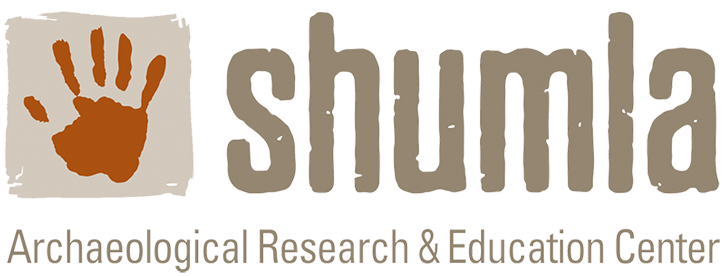
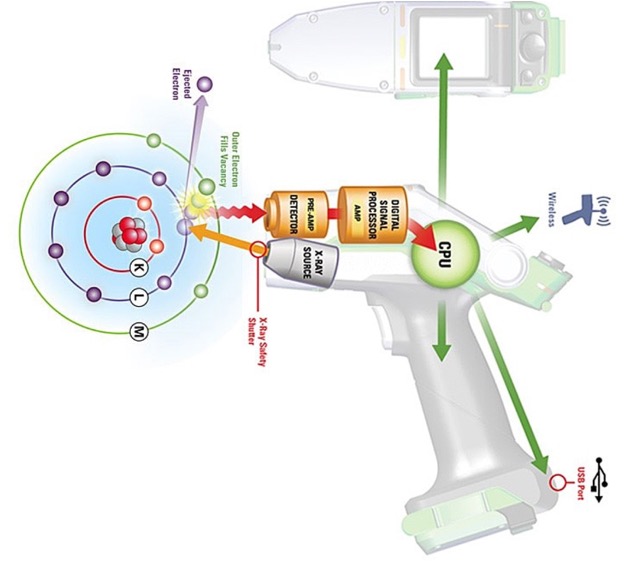
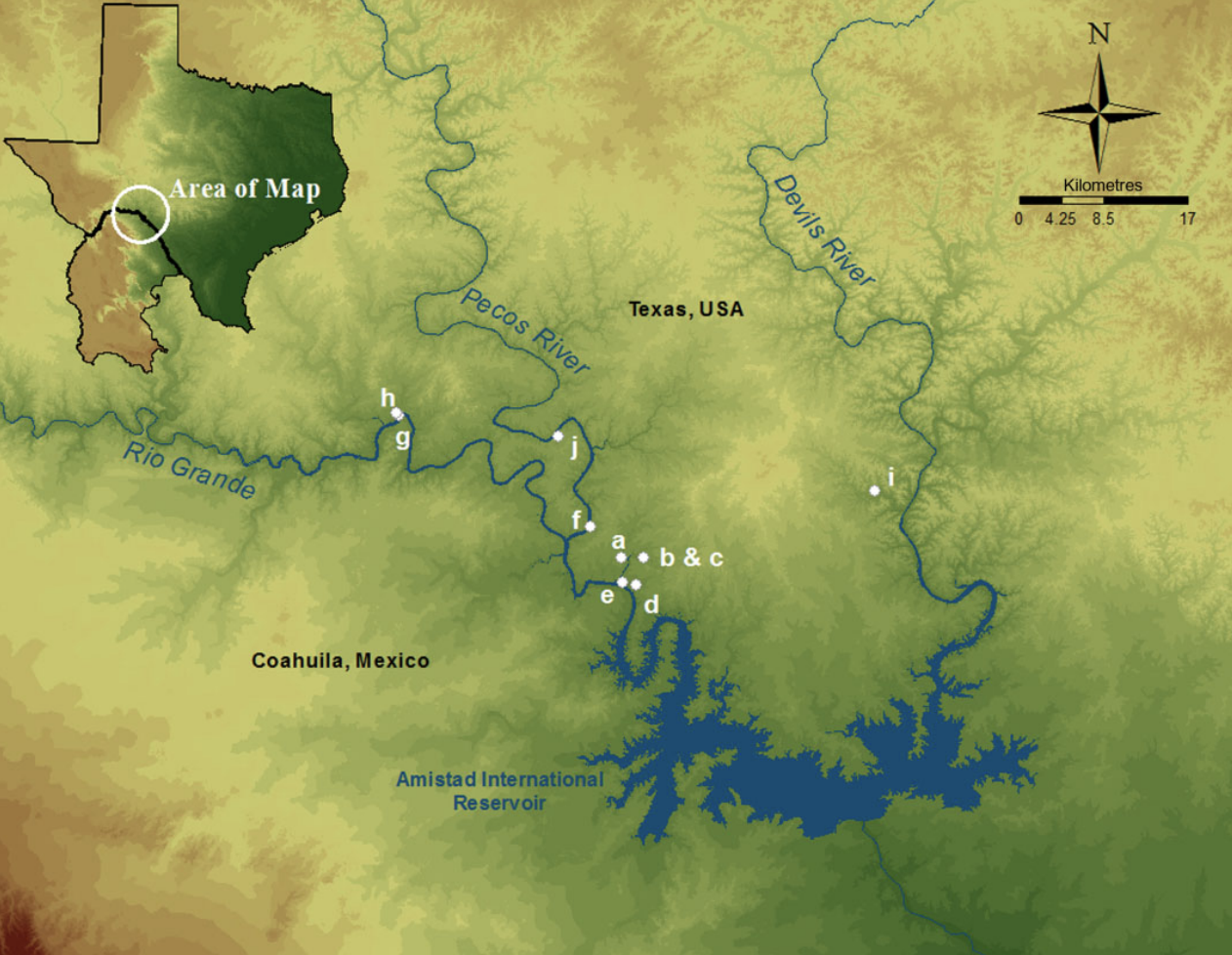
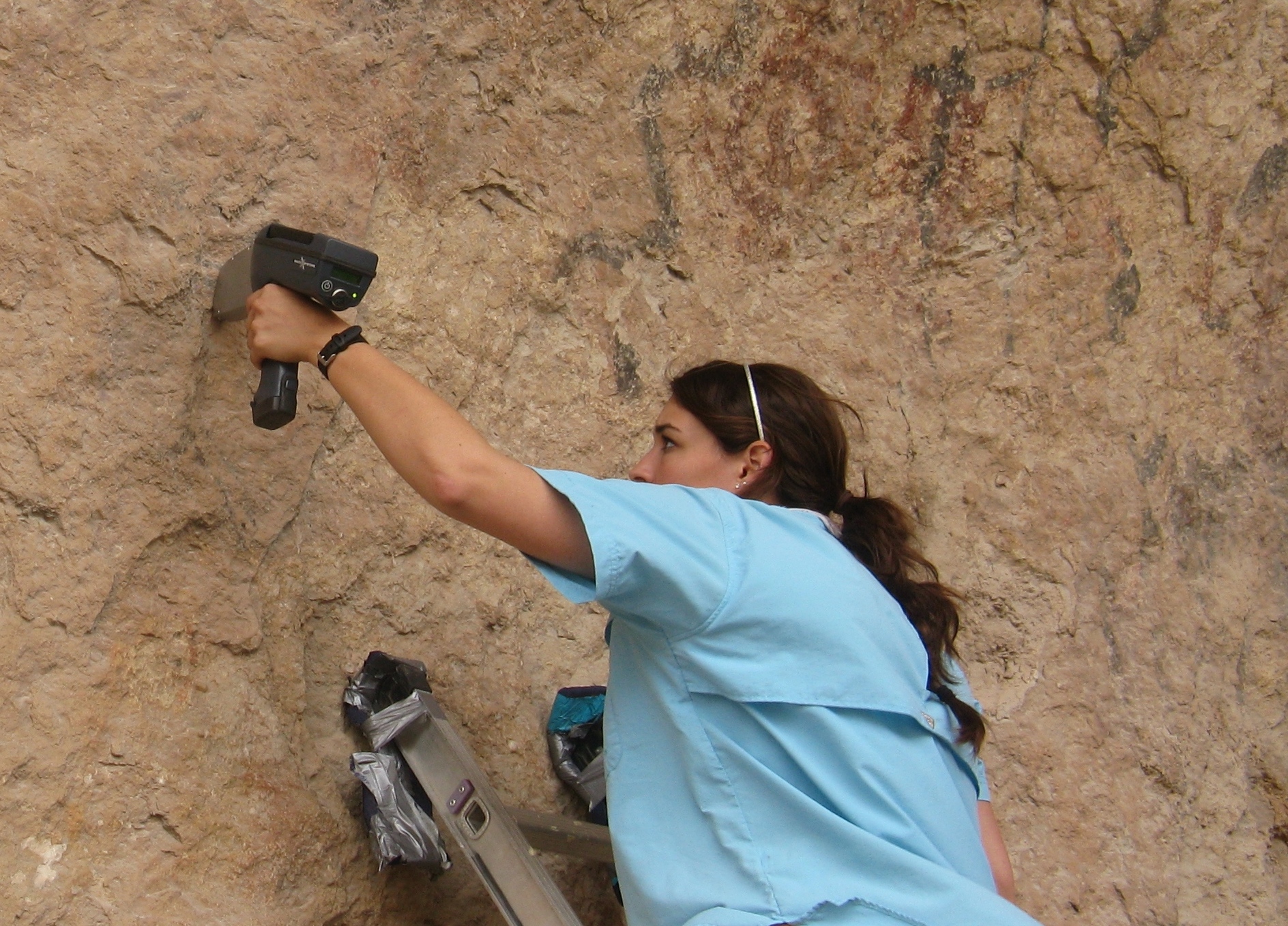
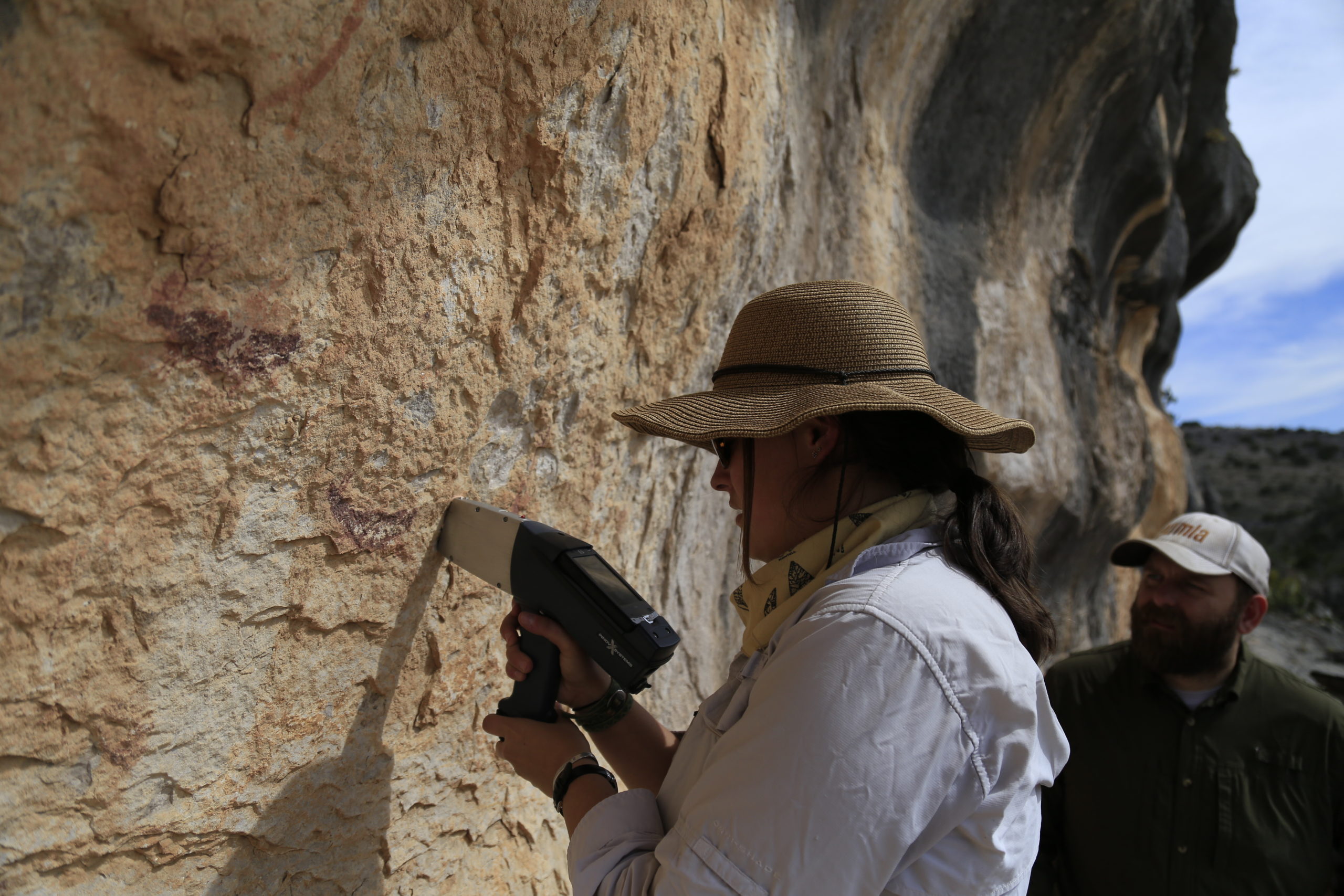
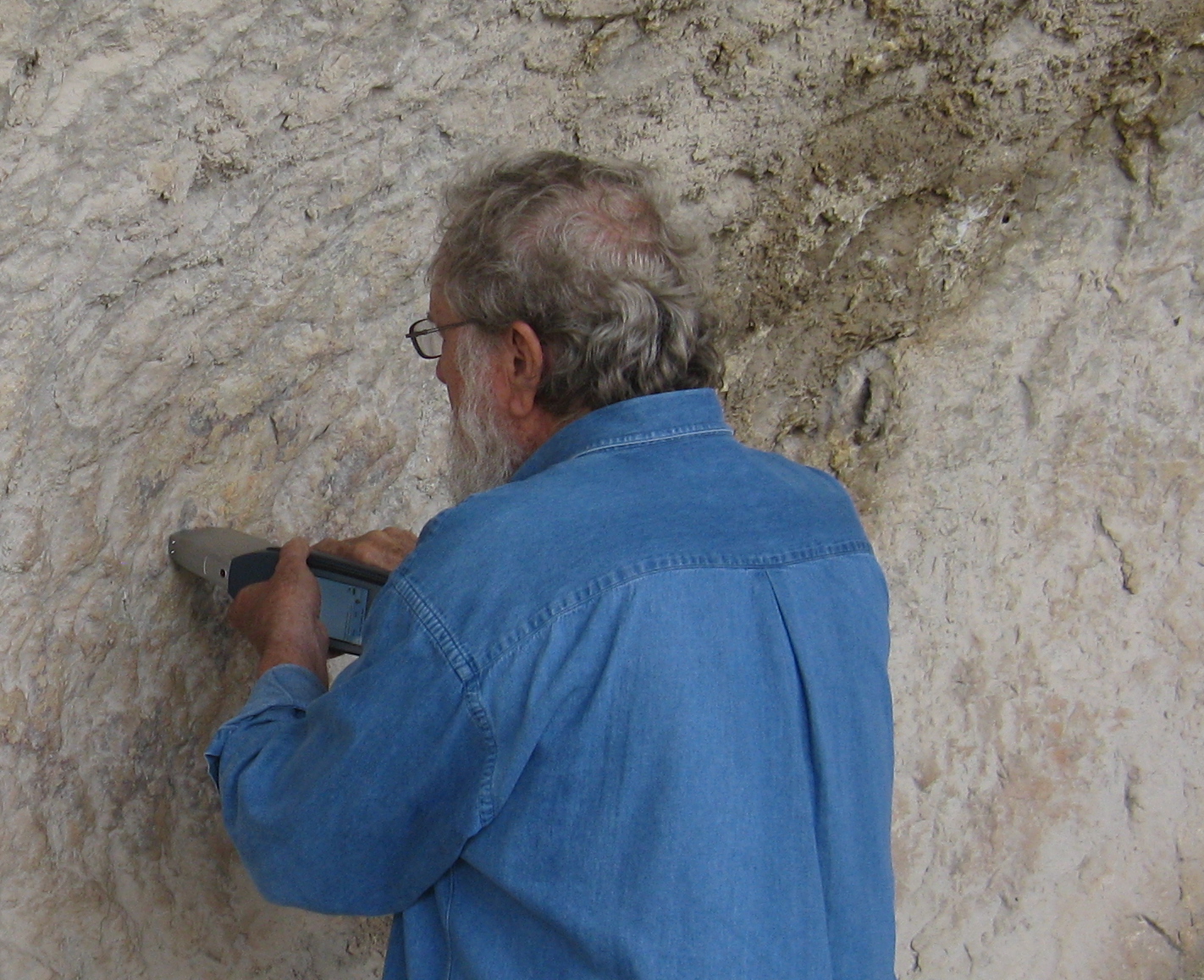
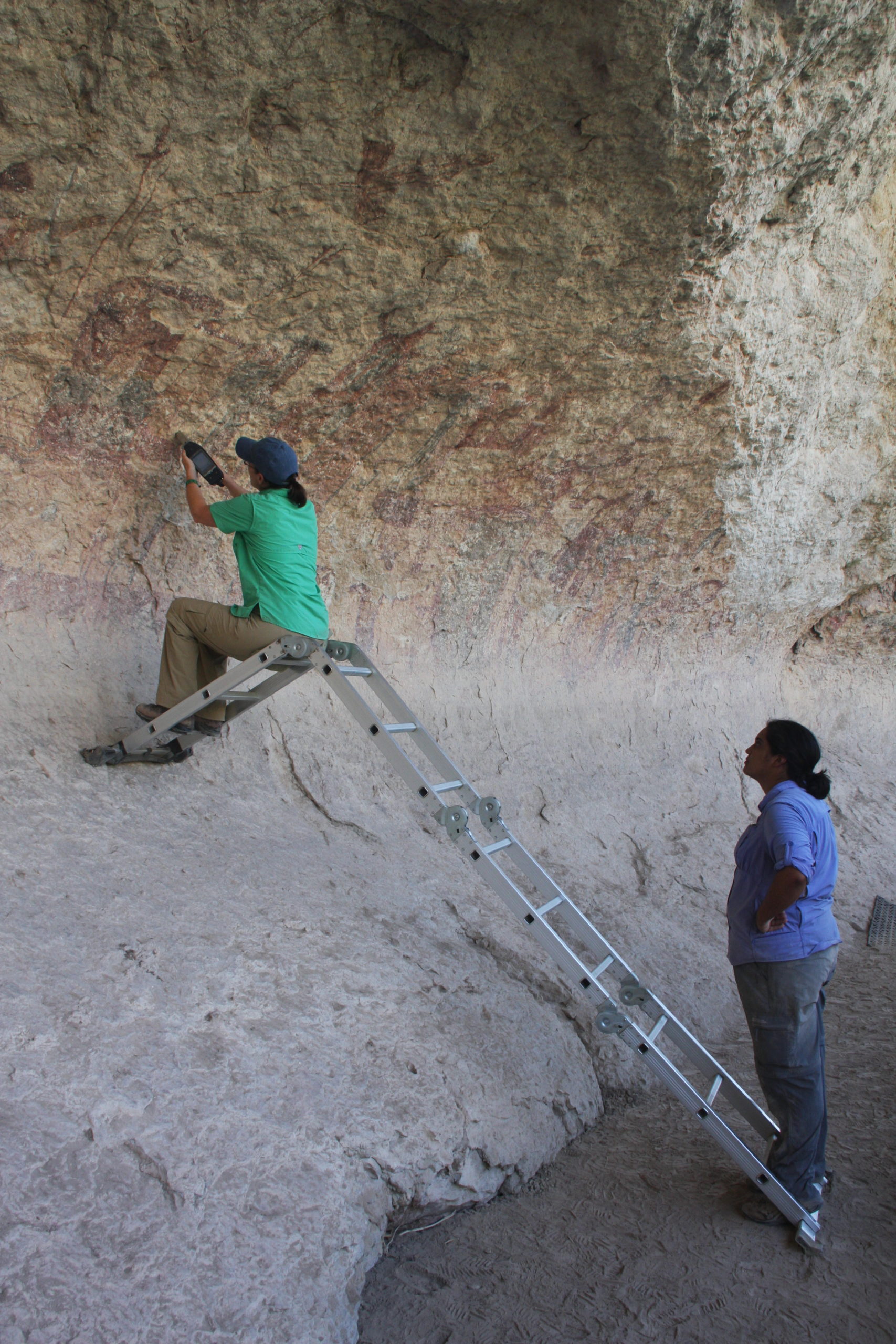
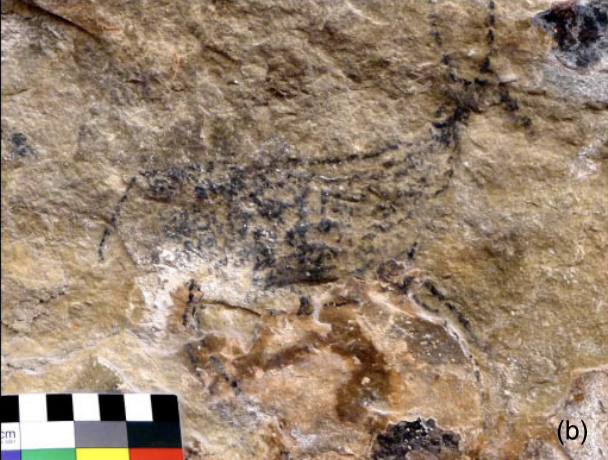
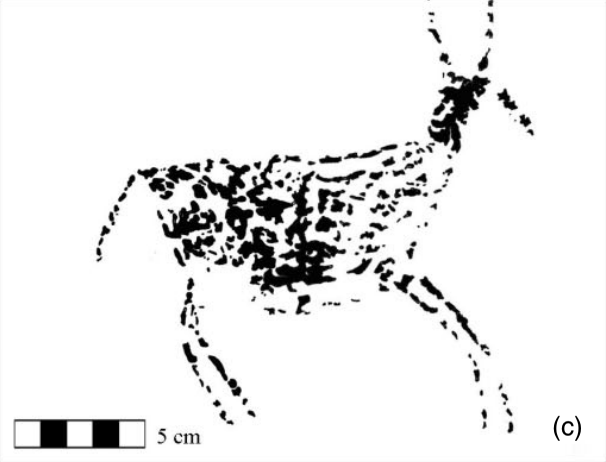
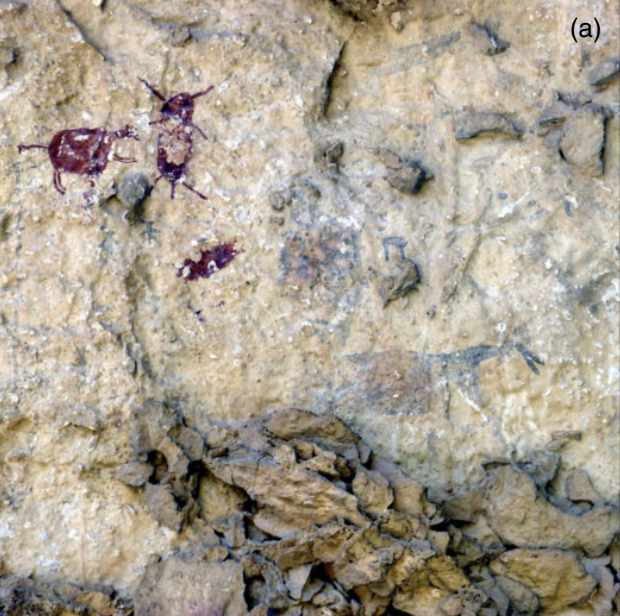
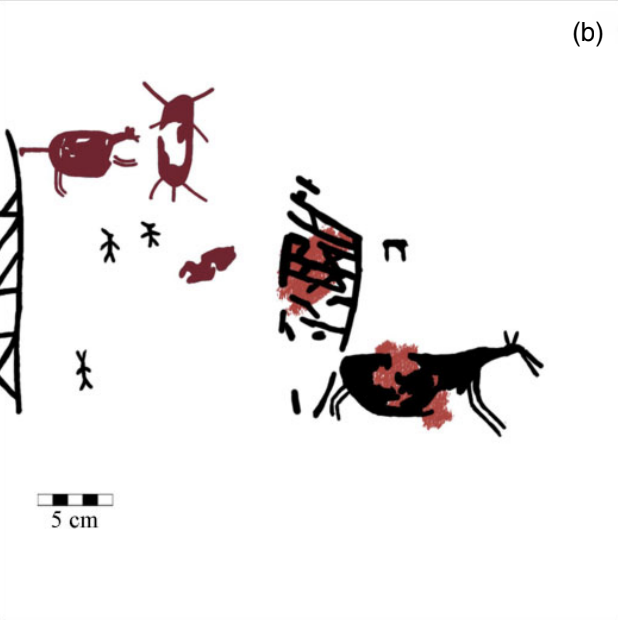
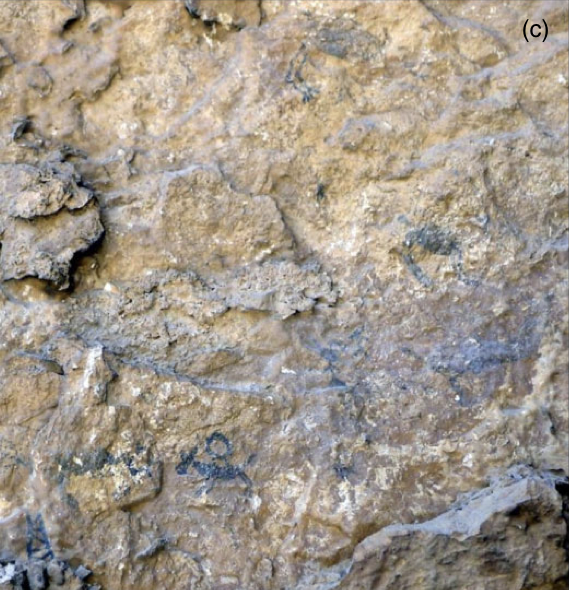
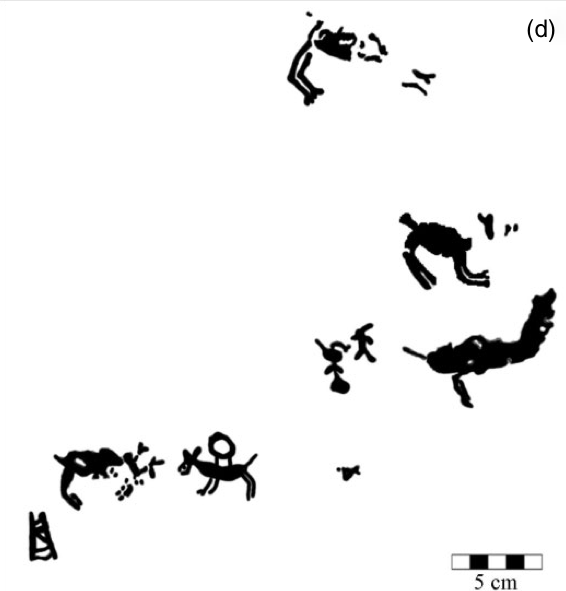
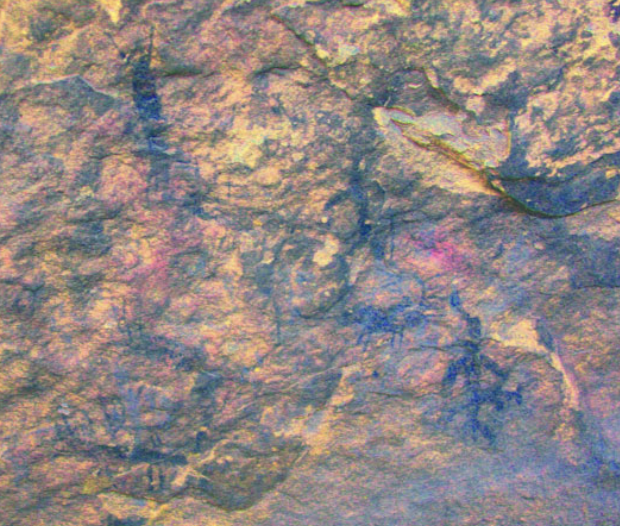
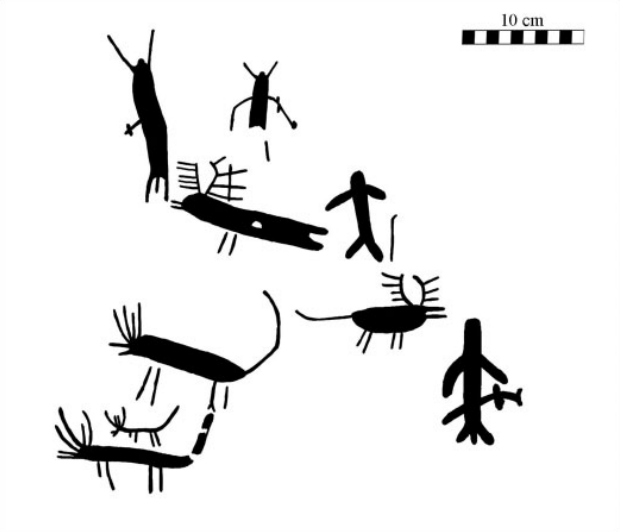
0 Comments